Soapboxie
Politics. Explore or sound off about government, law, elections, social issues, current events, politics, and the environment.
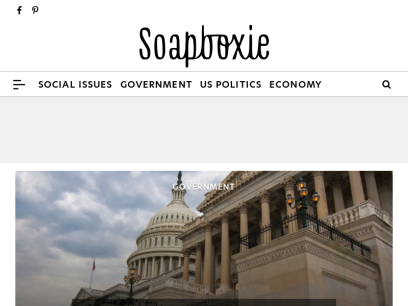
Stats
Alexa Rank:
Popular in Country:
Country Alexa Rank:
language: en
Response Time: 0.789694
SSL: Enable
Status: up
Code To Txt Ratio
Word Count 535
Links
ratio 1.7193550343648
SSL Details
SSL Issuer:
Issuer: GlobalSign Atlas R3 DV TLS CA 2022 Q3
Valid From: 2022-07-19 20:22:19
Expiration Date: 2023-08-20 20:22:18
SSL Organization:
Signature 39646d67ba6199fc9ba8f05f4da4b9152d8d8a34
Algorithm: RSA-SHA256
Found 31 Top Alternative to Soapboxie.com

 Fundraiserhelp.com
Fundraiserhelp.com
Fundraising Ideas, Event Fundraisers & Silent Auctions | Fundraiser Help
Unique ideas for fundraising events, best donation sources, cheap fundraiser ideas for schools, successful nonprofit events, silent auction tips & more!
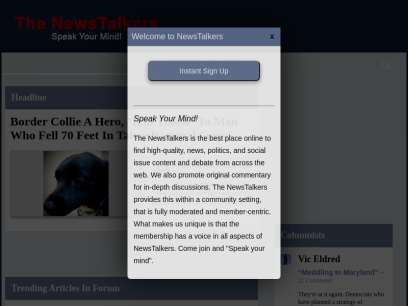
 Thenewstalkers.com
Thenewstalkers.com
Forums - The NewsTalkers | The NewsTalkers
Nonpartisan news and political forum. Discussion on current news articles or publish your own articles. Moderated but no censorship.

 Presidentsusa.net
Presidentsusa.net
Presidents
Presidents of the United States facts, presidential trivia, biographies, historic sites, scandals, speeches, research and information sources.

 Scholasticatravel.com
Scholasticatravel.com
Scholastica Travel | School Travel Specialists
Scholastica Travel Inc is a family-owned and operated group travel business and retail travel agency. We specialize in school travel planning services nationwide and are passionate about educational travel experiences.
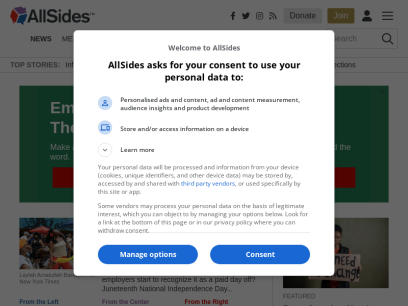
 Allsides.com
Allsides.com
AllSides | Balanced news via media bias ratings for an unbiased news perspective
We use media bias ratings to provide balanced news, perspectives and issues across the political spectrum. There is no such thing as unbiased news or truly non-partisan coverage - we use technology and the crowd to provide balance.
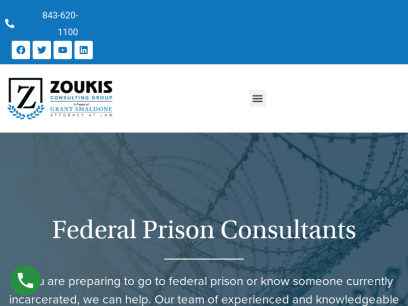
 Prisonerresource.com
Prisonerresource.com
Federal Prison Consultants | Prison Preparation | How to Survive Prison
Charged with a federal crime? Looking for answers? Our federal prison consultants can help. Talk to one of our federal prison consultants today for answers.
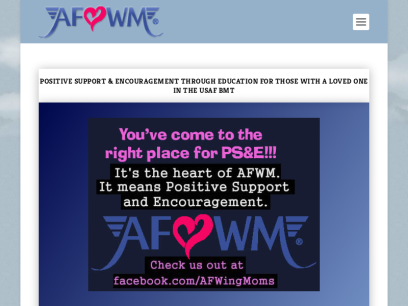
 Afwm.org
Afwm.org
AF WingMoms | Positive Support & Encouragement through Education for those with a loved one in the USAF BMT
Positive Support & Encouragement through Education for those with a loved one in the USAF BMT About AFWM AFWingMoms was created for all families and friends of future and/or present Air Force Basic Trainees. On this page you will find a vast amount of information and we highly encourage you...
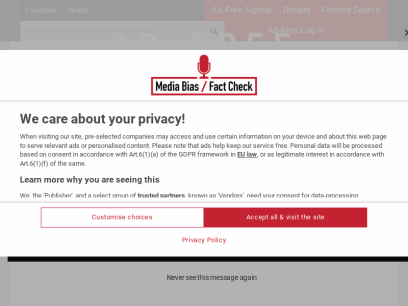
 Mediabiasfactcheck.com
Mediabiasfactcheck.com
Media Bias/Fact Check - Search and Learn the Bias of News Media
We are the most comprehensive media bias resource on the internet. Don’t be fooled by Fake News sources. Search Media Bias. View Fact Checks. Breaking News.
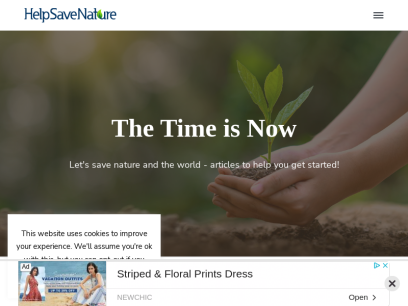
 Helpsavenature.com
Helpsavenature.com
Home - Help Save Nature
Save Money And Save The Planet At The Same Time These days, saving money is at the top of our minds. That is especially true when we're trying our best to live green. It's not always cheap. And it's … [Read More...] about Save Money And Save The Planet At...

 Futureofworking.com
Futureofworking.com
FutureofWorking.com | Career Advice for the Future
When giving a speech or presentation, how you start can make or break you. You want the beginning to be strong and instantly pull your audience in so that you have their full attention from the get-go. Here are 25 effective ways to start a speech or presentation. 1. The Common Ground Open Opening with a real life experience, goal or interest is a great way to grab the attention of the audience to show them that they can gain something by listening to you. By establishing common ground with the audience, especially if it is done with humility and grace, you put yourself on the same level as your audience. If you are an elderly CEO of a company and you discuss finances with a group of younger entry-level employees, you have to share your own business experiences when you were younger so that the audience will better understand your message. 2. Ask a Question If you want to make your audience think right away, ask them a question to start your speech. Ask either a rhetorical or literal question. Whether or not an answer to that question is called for, when people are posed with a question that matters to them, they will intuitively answer. When you ask a question, raise your hand to indicate what you want the audience to do. After asking a question like "How many people here are self-employed?", see if any audience members raise their hands. Take advantage of this engagement by getting into the heart of your speech. 3. Quote Sometimes it is as easy as opening with a relevant quote. You can set the tone for the rest of your speech if you have a quote that is memorable. You should keep in mind that whoever you quote has to be well known by the audience because if it is someone like your next-door neighbor, the quote will fall flat with everyone. If you are discussing topics related to politics, for example, it is wise to quote a former United States President. "If there is anything that a man can do well, I say let him do it. Give him a chance." -Abraham Lincoln 4. The Contrast Open If speeches feel like boxing matches to you, this type of opening would often be used. Showcase the difference between diametrically opposed concepts, positions, ideas or words, and the end result will be that some audience members will feel persuaded to change their perspective or embrace something new. There are always two sides to every story, and both sides have to be equally presented. What are the differences between a need and a want? Obstacles and opportunities? Problems and solutions? Highlighting the differences will get audiences to understand the points you are trying to make. 5. Tell a Story Before making the key points of your speech, telling a story to start can draw your audience in. Some of the most powerful words that can immediately grab the attention of the audience would be "Once upon a time" because regardless of age people will love stories of any kind. When you start your speech with a line like "Once upon a time", the audience will know that a story is coming. People will immediately calm down, become quiet, and listen to what you have to say. Whether it is fiction or non-fiction, telling a story will resonate with audience members. 6. Imagining Something If you want people to go on a unique journey with you, encourage them to imagine certain scenarios. For example, if you are working for a non-profit organization that brings water to people who lack the resources to get water, a good opener would be something like "Imagine being thirsty all the time, but never having anything to drink." By having them imagine scenarios like that, you make the audience a part of your presentation. They can actively empathize and engage with the content of your speech because they actually put themselves into that setting. 7. Humor Though this should never be forced onto the audience, when properly implemented you will put a lot of smiles on the faces of those you speak to. Being funny during a speech can be very difficult, but it is a way to give yourself relief as a public speaker. Telling jokes in your opening is a sign to the audience that you don't take yourself too seriously, and that they can relate to you in some way. One witty opener would be "If you can hear me, please start clapping as to confuse those that cannot make out what I am saying." 8. "This Day In History" Open One main reason why audiences gather to listen to speeches is that they can learn something. If you start your speech with a historical fact, the audience will immediately pay attention. For example, if the day of your speech falls on March 5, you would open your speech with "On this day, March 5, 1963: the Hula Hoop, a hip-swiveling toy that became a huge fad across America when it was first marketed by Wham-O in 1958, is patented by the company's co-founder, Arthur "Spud" Melin. An estimated 25 million Hula Hoops were sold in its first four months of production alone." 9. Thank the Organizers and Audience If you want to stick to the basics of public speaking, simply mention the people who made it possible for you to have a presentation. Thanking the event organizers and the audience compliments them, makes them feel proud and happy about your presence, and strongly connects you to the audience. Refer to the person who introduced you to one or more of the senior people in the organization in the audience, and compliment that person as a showing of respect. Be humble and genuine in your positive comments toward the organization. 10. Positive Statement Staying positive throughout a speech can be challenging, but it will become easier if you start your speech with a positive statement. You can begin by telling the audience how much they will like and appreciate what you have to say. For example, you could say something like "You're really going to enjoy the time we spend together today. I'm going to share with you some of the most thought-provoking ideas my company has ever made." The upbeat tone of this opening is enough to make the audience invested in whatever follows. 11. The Skeptical Audience Open A doubting audience is a difficult audience to handle. From the start, they may not trust your ideas or they could be against what you are proposing. Whether they were disappointed in the past or if they are simply stuck in their ways, they will put up a brick wall in front of you. The more hostile the crowd, the faster you must address the gap. Blending your goals and the needs of the audience requires a careful combination of anticipating the major objections, avoiding defensiveness, acknowledging the obvious truths early, and understanding the divided loyalties between the intractable, the undecided, and the supportive. Identify which of those must hear your message and adjust accordingly. 12. The Puzzle Open Brain teasers and mind puzzles tend to capture the attention of audiences that like to be given mental exercises. As the audience tries to figure out what it will take to solve them, they become highly engaged with the practice. Capitalize on this behavior by proposing a riddle, asking a puzzling question that you promise to reveal in the end, and suggesting that the audience complete a mathematical equation and promising to give the answer context as you go along during the speech. Alternatively, reveal one puzzle piece after another throughout the course of your speech to help your audience find the right solution. 13. Refer to Current Events Bringing documentation of something that is currently relevant to the public will help you to illustrate your point the way you want to. Use a current event story that is on the front page of your local newspaper to transition into your subject, and hold it up as you refer to it in your introduction. This serves as a visual image to the audience that they will keep in their minds as they see you hold up this documentation. When they hear you recite or read a key point of the news story, they will carefully pay attention to you. 14. Refer to a Recent Conversation One way to keep the topic you wish to talk about relevant to the audience is to refer to a recent conversation you had with someone attending this public speaking event. Hours or minutes before you get on stage to address the audience, you could be engaging in a thought-provoking conversation with someone in a lobby, and that person might tell you that this is one of the best times to be working in a specific industry. It is likely that many audience members will share the same view as that person, so when you mention this conversation in your introduction they will have something to relate to. 15. The Activity Open An active audience is one that will be more likely to keep listening to you after you finish your introduction. Keeping an audience preoccupied with an activity works well during training sessions and workshops when you are trying to teach a specific skill. Engaging in activity right from the start allows the audience to recognize the benefits of listening to your message. The activity has to be fun but also challenging enough. If they quickly get through it they will spend the rest of the workshop sitting in their chairs doing nothing. 16. The Study Hall Open If you are someone who loves using data-heavy charts and graphs to illustrate your points, you have to be careful about how you present your data to the audience. While they want to be informed, people in the audience also don't want to be bombarded with too much information all at once. Establishing a school setting and distributing paper handouts of data to your audience to begin your session helps them to follow along. Ask them to read the charts and graphs, and following their review you are well on your way to making your key points. 17. The PowerPoint Open When PowerPoint technology is used correctly it is a highly effective tool for the audience. Otherwise, it immediately makes your presentation feel boring. Slides that are overly literal will fall flat, but conceptual and eye-catching images give strength to your words. Pick captivating and intriguing images. If you present a talk on how to make ice cream, you could begin with a slide that shows the finished product of your ice cream brand. Describe the process of making ice cream in your introduction, and as you proceed you show slides in reverse, moving from final product to the very beginning. Along the way, you guide the viewer through each step. 18. The Audio Clip Open Your voice remains front and center for your talk, but additional sounds can bring more clarity to your message. Your words will be given more meaning with the help of a short audio clip as it makes your message more memorable. If you are teaching a music school, you can include two brief audio excerpts, a before and after of student instruction. Though your words do matter, these clips can have a better impact in persuading students to join your school. Audio testimonies, song recordings, oral accounts, and speech snippets all make for good audio clips. 19. Silence A subtle pause of silence, even if it extends to only 10 seconds, gives your audience enough time to sit and quiet down. Most audiences expect a speaker to begin right away. If you want to get the attention of an audience, taking that extra pause will help your cause. People will start wondering why you are being so quiet as they gather around, and when you break your silence and start speaking you can use that pause to illustrate a key point. Sometimes the main challenge in public speaking events is to get the audience into a silent state. 20. The Challenge Open Audiences want to be challenged and motivated to contribute to something they feel passionate about. Open your speech with a challenge if you are looking to increase sales, raising money for a project, asking for volunteers, or wanting legislative change. It isn't just about buying into your message but also taking the actions to manifest it. Start your speech with something like this: "Leaders see possibilities where followers see obstacles. I am here today to call for leaders to encourage those who are unsure about the project to look past the stumbling blocks we face in the development of this local park and consider giving citizens a better environment." 21. Multiple Choice Test Presenting your own multiple-choice test can draw your audience to your topic, and this approach is tailor-made for a talk with multiple perspectives about an issue or different solutions to the same problem. An example of this open would be to say the following: "As a company, we have several routes we can take regarding growth and increased sales. We could a) buy smaller companies to diversify our portfolio of services, b) move resources to focus on only a few, or c) we could opt to franchise. After we evaluate these options together, I will offer the option that I think is the way for us to go." 22. The Mystery Open The odds are likely that your audience loves to solve mysteries. Whether they are read in books or watched on television, mysteries grab the attention of people simply because of the uncertainty that is wrapped around them. When using this open present some clues on stage, regardless of which side of the argument they lean towards. Remind the audience of these clues throughout the speech and encourage them to come up with their own conclusions before revealing how your mystery gets solved. 23. Have Audience Members Talk to Each Other All audiences will be sitting close together in a setting where they will be visible in front of you, so you might as well take advantage of this. Encourage people to talk to others that are sitting next to them, and specifically to let them know what they would like to learn from your speech. Encourage your audience to discuss with each other any particular points. Any commands or show of leadership on your part will easily influence the audience, as long as you do it with confidence. 24. Bring Up Statistics Even if you don't bring any charts or graphs to illustrate your points, simply mentioning important statistics will resonate with the audience to get your message across the right way. Statistics have the potential to trigger the emotional appeal of the audience. One example of presenting statistics in your open would be something like: "In 2019 there were 152,000 homeless people roaming the streets in California. By 2025 that number is expected to nearly double." This kind of open highlights the need to address the problem of homelessness because the statistic is powerful, personalized and surprising. 25. The Unexpected Definition Open Dictionaries are obviously accurate, but there are times when words gain more power when they are redefined. If you are a valedictorian and you want to share how much your fellow students mean to you, the open can go like this: "The dictionary defines classmate as a member of your class, but my definition for you all is much broader than that. We were friends, teammates, and mentors. As worthy opponents, we challenged each other on the field and in the classroom. And, we now can define ourselves as fellow graduates." Conclusion How you start your presentation will depend on what kind of presentation you are giving, and what tone you want to set for your audience. Regardless of which you choose to begin with, incorporating one of these strong tools into your speech ensures that your presentation is a success from the very start.
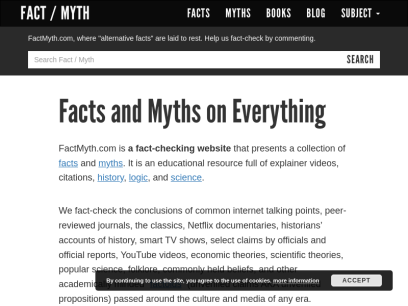
 Factmyth.com
Factmyth.com
Facts and Myths on Everything - Fact / Myth
FactMyth.com is a fact-checking website that presents a collection of facts and myths. It is an educational resource full of explainer videos, citations, history, logic, and science.

 Toptenz.net
Toptenz.net
TopTenz: History, Mystery & the Bizarre
TopTenz provides interesting articles about all topics from history to mystery and from the macabre to the weird.

 Online-paralegal-degree.org
Online-paralegal-degree.org
Online Paralegal Degree Center
Resource guide for exploring the latest high-quality information about the education and certifications required to successfully pursue a paralegal career.
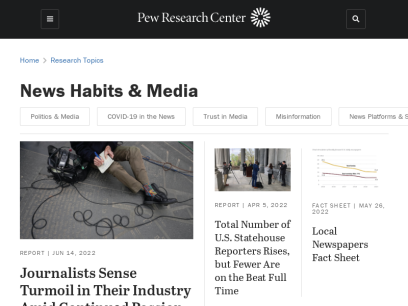
 Journalism.org
Journalism.org
News Habits & Media - Research and data from the Pew Research Center
Research and data on News Habits & Media from the Pew Research Center

 Greencleanguide.com
Greencleanguide.com
Green Clean Guide - Environment, Energy, Sustainability, Technology
The Green Clean Guide brings to you the latest insights from India and the world, on the environment, climate change, sustainability, clean energy, and technology. Find all of environmental news and insights in one spot.

 Winspireme.com
Winspireme.com
Auction Items for Non-Profits | Charity Auction Ideas | Winspire
Winspire helps Nonprofits maximize their fundraising revenue by providing highly sought after auction packages. Start planning your next event now!

 Fair.org
Fair.org
FAIR - FAIR is the national progressive media watchdog group, challenging corporate media bias, spin and misinformation.
FAIR is the national progressive media watchdog group, challenging corporate media bias, spin and misinformation.

 Balancedpolitics.org
Balancedpolitics.org
BalancedPolitics.org - Free Balanced, Non-Partisan Discussion of Political & Social Issues for Debate (Pros and Cons - Decision Making Politics)
Free balanced, non-partisan discussion of controversial social and policital issues (pros and cons)

 Vittana.org
Vittana.org
Vittana.org
11 Frugal Habits of the Super Rich How to Build Wealth Money Saving Tips for Entrepreneurs How to Start a Budget 17 Important Pros and Cons of Bankruptcy Chapter 13 13 Variable Annuity Pros and Cons How Does Microfinance Work 13 Advantages and Disadvantages of a Savings Account HELOC vs...

 Ptotoday.com
Ptotoday.com
PTO Today: Ideas, Help, and Advice for PTO & PTA Groups - PTO Today
The #1 resource for school parent groups. PTOtoday.com has expert advice, free programs, tools, tips, and tons of ideas to help make parent groups successful and schools great.

 Opinionfront.com
Opinionfront.com
Home - Opinion Front
Essential Benefits of a Digital Detox Very few people would argue the digital revolution hasn't yielded any benefits for humankind. Thanks to our new digital tools, we have the ability to … [Read More...] about Essential Benefits of a Digital Detox Why Non-STEM Degrees Are Still Valuable These days, there's...

 Greengarageblog.org
Greengarageblog.org
Green Garage – The ECO Friendly Blog
20 Beach Renourishment Pros and Cons 26 Significant Pros and Cons of Hydrogen Fuel Cells 14 Key Pros and Cons of Hydrofracking 14 Foremost Pros and Cons of the Green Revolution 14 Far-Reaching Advantages and Disadvantages of Coal 11 Core Advantages and Disadvantages of Chemical Energy 8 Central Pros and...
Technologies Used by soapboxie.com
Dns Records of soapboxie.com
A Record: 151.101.194.98 151.101.66.98 151.101.130.98 151.101.2.98AAAA Record:
CNAME Record:
NS Record: ns-533.awsdns-02.net ns-1790.awsdns-31.co.uk ns-1275.awsdns-31.org ns-61.awsdns-07.com
SOA Record: awsdns-hostmaster.amazon.com
MX Record:
SRV Record:
TXT Record: _globalsign-domain-verification=dR6DfvcE5TDoux01H2B59s1mxtGbU7dof6HP96Z4r-
DNSKEY Record:
CAA Record:
Whois Detail of soapboxie.com
Domain Name: soapboxie.comRegistry Domain ID: 2030416129_DOMAIN_COM-VRSN
Registrar WHOIS Server: whois.registrar.amazon.com
Registrar URL: https://registrar.amazon.com
Updated Date: 2022-04-18T22:25:15.444Z
Creation Date: 2016-05-23T17:26:21Z
Registrar Registration Expiration Date: 2023-05-23T17:26:21Z
Registrar: Amazon Registrar, Inc.
Registrar IANA ID: 468
Registrar Abuse Contact Email: [email protected]
Registrar Abuse Contact Phone: +1.2067406200
Reseller:
Domain Status: renewPeriod https://icann.org/epp#renewPeriod
Domain Status: ok https://icann.org/epp#ok
Registry Registrant ID:
Registrant Name: On behalf of soapboxie.com owner
Registrant Organization: Whois Privacy Service
Registrant Street: P.O. Box 81226
Registrant City: Seattle
Registrant State/Province: WA
Registrant Postal Code: 98108-1226
Registrant Country: US
Registrant Phone: +1.2065771368
Registrant Phone Ext:
Registrant Fax:
Registrant Fax Ext:
Registrant Email: [email protected]
Registry Admin ID:
Admin Name: On behalf of soapboxie.com administrative contact
Admin Organization: Whois Privacy Service
Admin Street: P.O. Box 81226
Admin City: Seattle
Admin State/Province: WA
Admin Postal Code: 98108-1226
Admin Country: US
Admin Phone: +1.2065771368
Admin Phone Ext:
Admin Fax:
Admin Fax Ext:
Admin Email: [email protected]
Registry Tech ID:
Tech Name: On behalf of soapboxie.com technical contact
Tech Organization: Whois Privacy Service
Tech Street: P.O. Box 81226
Tech City: Seattle
Tech State/Province: WA
Tech Postal Code: 98108-1226
Tech Country: US
Tech Phone: +1.2065771368
Tech Phone Ext:
Tech Fax:
Tech Fax Ext:
Tech Email: [email protected]
Name Server: ns-1275.awsdns-31.org
Name Server: ns-1790.awsdns-31.co.uk
Name Server: ns-533.awsdns-02.net
Name Server: ns-61.awsdns-07.com
DNSSEC: unsigned
URL of the ICANN WHOIS Data Problem Reporting System: http://wdprs.internic.net/
>>> Last update of WHOIS database: 2022-04-18T22:25:15.672Z <<<
For more information on Whois status codes, please visit https://www.icann.org/resources/pages/epp
By submitting a query to the Amazon Registrar, Inc. WHOIS database, you agree to abide by the following terms. The data in Amazon Registrar, Inc.'s WHOIS database is provided by Amazon Registrar, Inc. for the sole purpose of assisting you in obtaining information about domain name accuracy. You agree to use this data only for lawful purposes and further agree not to use this data for any unlawful purpose or to: (1) enable, allow, or otherwise support the transmission by email, telephone, or facsimile of commercial advertising or unsolicited bulk email, or (2) enable high volume, automated, electronic processes to collect or compile this data for any purpose, including mining this data for your own personal or commercial purposes. Amazon Registrar, Inc. reserves the right to restrict or terminate your access to the data if you fail to abide by these terms of use. Amazon Registrar, Inc. reserves the right to modify these terms at any time.
Visit Amazon Registrar, Inc. at https://registrar.amazon.com
Contact information available here: https://docs.aws.amazon.com/Route53/latest/DeveloperGuide/domain-contact-support.html
© 2022, Amazon.com, Inc., or its affiliates
 67.23.242.53
67.23.242.53
 United States
United States
 InValid
SSL
InValid
SSL